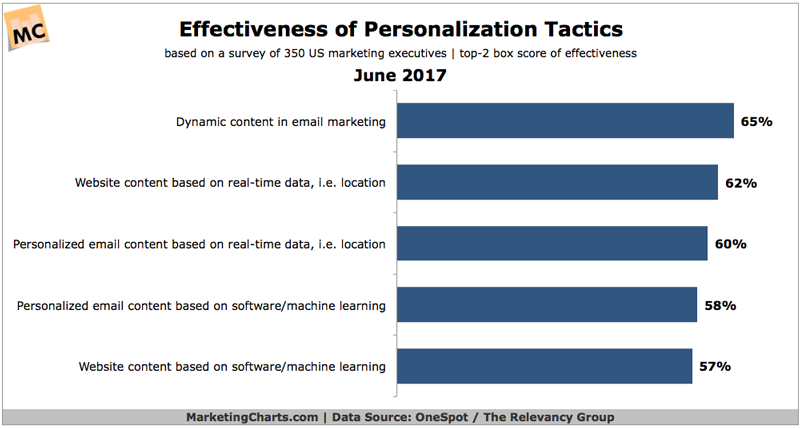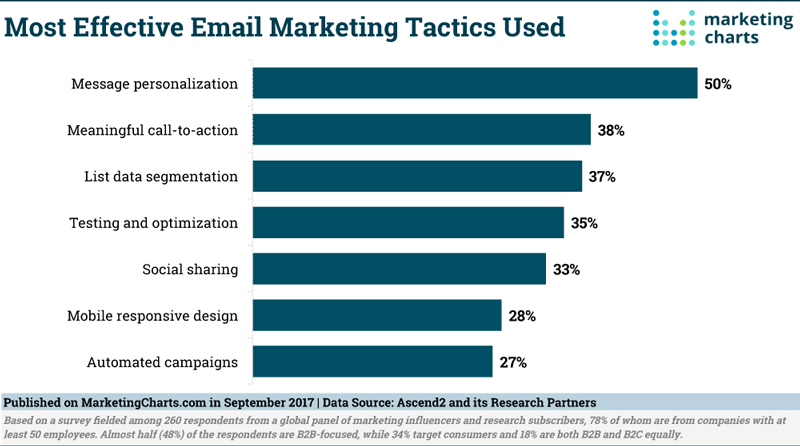2018: Email Marketing and the Customer Experience
I remember when CSS was barely usable in HTML email and plain-text versions were our attempt to be ‘mobile-friendly’. Table-based, inline-styled emails were all the rage way back in 2007. Seems like ages have passed since, although Outlook will always remind us of the good-old-days. Now, emails are mobile responsive, contain kinetic elements, and even contextual content by using real-time information gathered from the recipient - dilly, dilly!
Time has matured email technology, deepened marketers visibility into customer interests, and lowered marketing costs, but it has not done a great job at teaching marketers the true value of relational business development. Traditional marketing teaches a broader, more general approach to attract clients, then the sales department takes the reigns. Today, we have the capacity to personalize potential customer and lifetime customer lifecycles with complete email automation - most organizations still leave their email marketing to date-driven static emails or rigidly scheduled campaigns.
Essentially, marketers are still following “best practices” from times-past, bringing badly-aged techniques into a considerably more robust technical environment and ignoring the fact that customers are moving to a hyper-connected marketing model that suits the consumer over the needs of the corporation. But, we all still see those email templates that just will not expire, to this day I still watch prominent businesses deploy ancient designs and code to the inbox!
In 2018, these bad habits will hurt revenues even more for those who keep using them.
Where is the email customer experience currently?
Another #emailgeek, and long-time Influencer, Kath Pay makes a great point about customer-experience marketing in email campaigns - today’s consumers react positively to relationship-driven communication. The quote below is four months old, hinting that 2017 still has not extinguished the “email blasters” that have been a part of the email industry since the beginning.
“At its core, "helpful marketing" sees every email you send as a customer-service-oriented message that delivers on the original transaction ...
… Each message shapes the customer experience with your brand. A constant stream of emails focused on your goals rather than what your customers need to succeed in their own lives does not create a great experience.
Helpful marketing is a major force in the rise of customer-experience marketing that centers on relationships rather than military-style campaigns to build sales and grow profits.” - Kath Pay
Our current email landscape still contains a lot of email campaigns that could use upgrading. Leaving the customer experience lacking is becoming less of an option for companies looking to compete for digital exposure. Poorly managed, broadcast email campaigns do nothing but hurt relationship marketing efforts, and alienate customers from connecting. Beyond that, there are email marketing fundamentals being missed that can make a difference in campaign results.
Personalization is a huge contributor to helping the customer experience become positive for the customer and a step in the right direction for relational marketing. Simple, personalized emails can boost message effectiveness up to 65% by utilizing customer-centric practices like first name, real-time location, or dynamic content.

On top of all others, email personalization lead the most effective tactics used in 2017. Each tactic is arguably something to create a better customer experience, but what grabs my attention is the automation campaign numbers at the very bottom (heavy b2b sampling). While the personalization numbers are positive, the timing of the personalization could be bad if it relies solely on manual deployment vs. an instant automated response email. Automation, in regard to timely messaging, can be a leading factor in what makes the personalization efforts more effective. Personalized emails that are too late to the inbox lose almost all relevance and credibility.

How to improve the email customer experience
Each email marketer will have different business needs, but covering the fundamentals regardless of the campaign will improve the scalability, reduce overhead, and drive results. Creating an engaging customer experience does not require an over-complex process. Prioritizing tactics can improve the experience for any campaign, big or small.
Here are some of my email program fundamentals:
- Personalize email content where it counts. Think about where personalization will have the most impact within the email. Not all personalization data matters to the customer, but it can be used as supporting information to create a better experience.
- Update and optimize email templates periodically. There is no reason to have stale content or old code these days. Templates can be professionally created for a few hundred dollars and content does not need to create a great customer experience. Follow the data.
- Lean on triggered email to help the customer. Responding to the customer is the first step in helping them. Triggered emails can be leveraged to ensure multiple touch points are met during the email exchange, keeping them engaged.
- Do not be afraid to survey. People love to have their voice heard. Send surveys to connect with people and improve campaign performance with customer feedback.
Moving Forward
Email marketing in 2018 will need to keep aligning with more customer-centric approaches. Mobile devices have taken over and modern-day consumers demand more intelligent business-to-consumer dialogue. Marketers who can relate to customers and create transactional conversations in the email channel will benefit greatly in the years to come.
Being helpful and intelligently responsive customers in email is a way to more revenue in 2018.

 How to resolve AdBlock issue?
How to resolve AdBlock issue? 